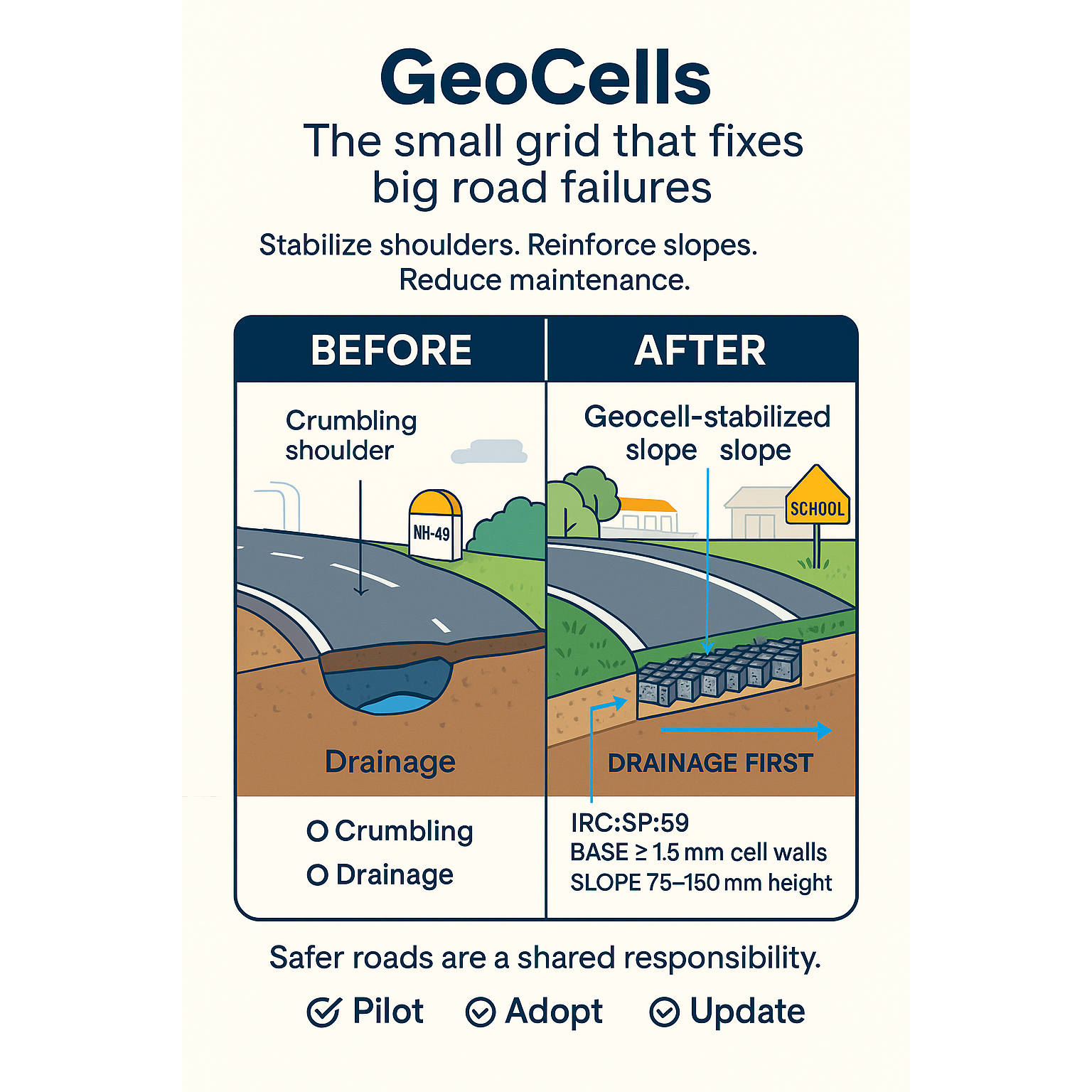Updates
Products


Currently it only shows your basic business info. Start adding relevant business details such as description, images and products or services to gain your customers attention by using Boost 360 android app / iOS App / web portal.


GeoCells: the small grid that fixes big road failures Erosion doesn’t trend on Twitter, but it kills silently. When shoulders crumble or embankments slip, a small swerve becomes a tragedy. India lost 1, 72, 890 lives to road crashes in 2023—and 67% of accidents happened on straight roads, often in open areas where weak edges and poor drainage magnify risk. ([Ministry of Road Transport and Highways][1]) Here’s the reformist fix hiding in plain sight: geocells—those honeycomb grids that confine soil, stiffen layers, and keep slopes where they belong. The Indian Roads Congress already tells us how to use them. For base/subbase reinforcement, IRC:SP:59 recommends a minimum 1.5 mm cell-wall thickness; for slopes, geocell panels 75–150 mm high, properly pinned and joined, act like a flexible armor that resists slippage and invites vegetation. Translation: stronger edges, fewer washouts, safer recoveries. ([Law Resource][2]) This isn’t theory. NHAI corridors have deployed geocells—from embankment protection on NH-15 to stabilization along the Delhi–Bahadurgarh system—because the method works with local infill, speeds construction, and reduces maintenance cycles. ([STRATA GLOBAL][3]) Policy already nudges us in this direction. MoRTH’s 2018 circular urges all agencies to adopt geosynthetics per IRC codes, budget for them in DPRs, and report usage—so “why aren’t we doing this at scale?” is the only honest question.& #x20; 📌 What changes outcomes on ground? — Use geocells where risk concentrates: eroding shoulders near bus bays, culvert approaches, and school frontages. — Specify to code, not catalog: IRC:SP:59 compliance, ≥1.5 mm walls for load-bearing, QA on seams and ESCR. — Design for drainage first, reinforcement second; confinement cannot cure ponding. ([Law Resource][2]) 💡 Practical, near-term actions (pick one this quarter): ✅ Pilot a 2 km geocell-reinforced shoulder on a high-speed straight with recurrent edge failures; publish before-after rutting and repair data. ✅ Adopt two school zones: stabilize embankments and side slopes with geocells plus signage and calming. ✅ Update bid documents: include IRC:SP:59 line items and site QA checks; photograph and log every panel, pin, and joint. Safer roads are a shared responsibility. If your team maintains highways in Mumbai, Delhi, Bengaluru, or Pune, you don’t need another workshop—you need a site, a spec, and a supervisor. In comments, I’ll add a simple visual comparing a fragile shoulder vs. a geocell-stabilized shoulder for your next toolbox talk. @NHAI @Industry Leader @CSR Partner #RoadSafety #Geocells #Geosynthetics #NHAI #Highways #ErosionControl #Pavements #Infrastructure #India #CSR #Construction #PublicPolicy